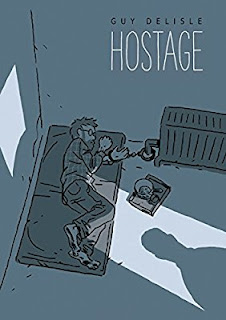Mercy was written by Dan Palmer, the son of medical mystery author Michael Palmer who died a year or two ago. I don't know if Mercy was an unfinished manuscript by Michael or whether his son is going to continue to write medical mysteries in his memory. Either way, I am glad that there is someone still interested in writing medical mysteries. It is my favorite mystery sub-genre. With the death of Michael Palmer and Robin Cook no longer writing there currently isn't anyone specializing in this sub-genre.
The topic of Mercy is the critically ill patient's right to die with dignity. In the novel's White Memorial Hospital expensive, critically ill patients mysteriously die of heart attacks even though none of them have heart disease. It saves the hospital a bundle of money but how is it happening and who is involved?
ICU doctor Julie Devereaux is an outspoken advocate for a patient's right to die until her fiance becomes a paraplegic from a motorcycle accident. He dies of an unexpected heart attack. His autopsy reveals an unusual heart defect, one that is only seen in people under extreme stress. Since the defect disappears when the stress is alleviated it is not seen as a fatal disease. Julie investigates similar cases and finds herself the target of threats, even to the point of being accused of a mercy killing herself.
I thoroughly enjoyed reading this book. It was quite relaxing to read a book that I knew I would like because of its genre. I also knew that any book written by the Palmers will have great characters, excellent pacing, and suspense. They have the writing gene. Mercy was somewhat bittersweet due to personal circumstances that have put me in the hospital several times over the past 2 months. I have been subjected to nurses yelling at me for not having a living will and they let it be known that they wanted me to sign a DNR (do not rescesitate order). Being stubborn I refused. But the beginning of the book was too real for me and made me a little paranoid. However, it has a compelling plot and excellent writing and I highly recommend it.
The topic of Mercy is the critically ill patient's right to die with dignity. In the novel's White Memorial Hospital expensive, critically ill patients mysteriously die of heart attacks even though none of them have heart disease. It saves the hospital a bundle of money but how is it happening and who is involved?
ICU doctor Julie Devereaux is an outspoken advocate for a patient's right to die until her fiance becomes a paraplegic from a motorcycle accident. He dies of an unexpected heart attack. His autopsy reveals an unusual heart defect, one that is only seen in people under extreme stress. Since the defect disappears when the stress is alleviated it is not seen as a fatal disease. Julie investigates similar cases and finds herself the target of threats, even to the point of being accused of a mercy killing herself.
I thoroughly enjoyed reading this book. It was quite relaxing to read a book that I knew I would like because of its genre. I also knew that any book written by the Palmers will have great characters, excellent pacing, and suspense. They have the writing gene. Mercy was somewhat bittersweet due to personal circumstances that have put me in the hospital several times over the past 2 months. I have been subjected to nurses yelling at me for not having a living will and they let it be known that they wanted me to sign a DNR (do not rescesitate order). Being stubborn I refused. But the beginning of the book was too real for me and made me a little paranoid. However, it has a compelling plot and excellent writing and I highly recommend it.












